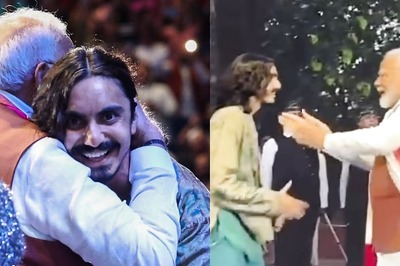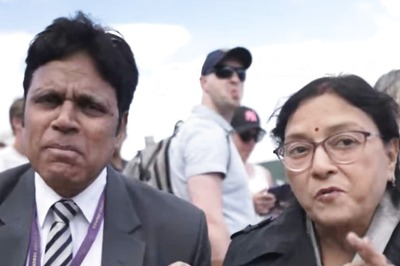
views
JAKARTA: Indonesia launched a COVID-19 screening programme at train stations on Wednesday using a breathalyzer it hopes can find positive cases in a country battling one of the worst coronavirus epidemics in Asia.
The breathalyzer, known as GeNose, was developed by the University of Gadjah Mada (UGM), which says it detects the reaction between the coronavirus and body tissue in the respiratory tract with at least 95% accuracy.
Subjects are required to blow into a bag and the result is available in just two minutes.
A similar breath test for COVID-19, SpiroNose, developed by a Dutch health technology company, is being rolled out in the Netherlands to speed up its testing process.
GeNose underwent clinical trial at a Yogyakarta hospital in May 2020 and was approved for distribution in December. It differs from the polymerase chain reaction (PCR) swab tests and the rapid tests that extract blood with a prick of the finger.
“It’s a simple method and easier for me as sometimes, the rapid antigen test hurts slightly,” said Mugi Hartoyo, 59, after taking the test in central Jakarta.
Indonesia has the biggest coronavirus battle in Southeast Asia, with about 1.1 million infections and over 30,000 deaths, stretching its hospitals. Critics have said its testing, tracing and health protocols have been weak.
The machine, sold at 68 million Indonesian rupiah ($4,850), is implanted with a memory of positive PCR swab test results, Kuwat Triyana, who heads the innovation team, told Reuters.
“This tool adapts the function of the human nose or of the sniffer dog’s nose, which is to recognise the smell, or in this case to recognise the smell of the breath of a person who is confirmed with COVID, compared to people who are not,” he said.
Those with positive readings are required to undergo a confirmatory PCR test.
Though it does have shortcomings, it could help detection efforts, said Dicky Budiman, an epidemiologist at Griffith University.
“On paper it’s promising and has potential, I’d say. But the implementation is relatively not easy,” he said, adding the machine needed to be programmed with precise data to ensure accuracy.
(Writing by Heru Asprihanto and Angie Teo; Editing by Martin Petty and Janet Lawrence)
Disclaimer: This post has been auto-published from an agency feed without any modifications to the text and has not been reviewed by an editor
Read all the Latest News, Breaking News and Coronavirus News here




















Comments
0 comment